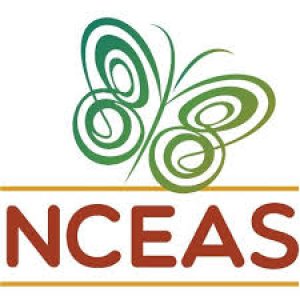Spotlight
NCEAS and NEON develop virtual onboarding resource for a changing world
March 11, 2021
Scientists today are collaborating more and more across networks and teams, with "open science" including not just open publication, but also open data, software, code, and workflows. Early career scientists (ECS) especially need vital resources to help them get up to speed in new environments in an increasingly virtual and cross-network work environment. In light of this changing research landscape, the National Center for Ecological Analysis and Synthesis (NCEAS) and the National Ecological Observatory Network (NEON) have developed an open resource to help NEON ECS with this challenge.
The new onboarding document is geared to support researchers beginning their postdoctoral work with NEON; however, it can be easily adapted for ECS entering other roles. It is designed in a way that provides clear access to information, resources, and training in open practices and team science. The premise, woven throughout the sections and modules, is that developing good data science skills enables ECS to maximize productivity, share data effectively and efficiently, and benefit from others in the scientific community using their data.
"Data science is so much more than statistical analyses," says Dr. Amber E. Budden, Director for Learning and Outreach at NCEAS, "it includes processes and practices that enable research reproducibility by self or others. Good data science includes analytical, technical and social elements, and the content of this resource reflects expertise developed at NCEAS across decades of leading collaborative synthesis working groups and training activities. We are excited to collaborate with NEON and collate this shared knowledge into a format accessible for use for by early career researchers."
As with many current virtual resources, this packet is self-guided, structured to be worked through in the first weeks of a new position. It builds on the experience of ecological researchers, trainers, developers, and information managers in collaborative, reproducible research practices and infrastructure.
Among the topics and practices covered is the idea of laying out Individual Development Plans, or IDPs. An IDP helps an ECS think about their research and the skills they are developing, within the context of planning for a future career. IDPs for postdocs were put forward by the Federation of American Societies for Experimental Biology (FASEB) in 2003 and have since been widely adopted. ECS benefit from an IDP through identifying strengths or gaps in their knowledge or skill set; identifying short- and long-term goals; facilitating communication with a mentor; helping with time management and acknowledging milestones and momentum; and documenting development through assessment and reflection, all with their career path in mind.
The onboarding document has many other thorough and useful sections including tips and best practices for working in team science, how to effectively communicate research, and a set of comprehensive modules on reproducible data research techniques, including working with common open source software. Throughout, it also has links to essential resources from videos explaining NEON to tutorials where postdocs can brush up on R skills.
Support for the development of this resource was provided by NEON to the National Center for Ecological Analysis and Synthesis. Individual units were created by Julien Brun, Amber Budden, Jeanette Clark, Matt Jones, Carrie Kappel, Erin McLean, Bryce Mecum, William Michener, Julie Stewart Lowndes, and Geoff Willard.

